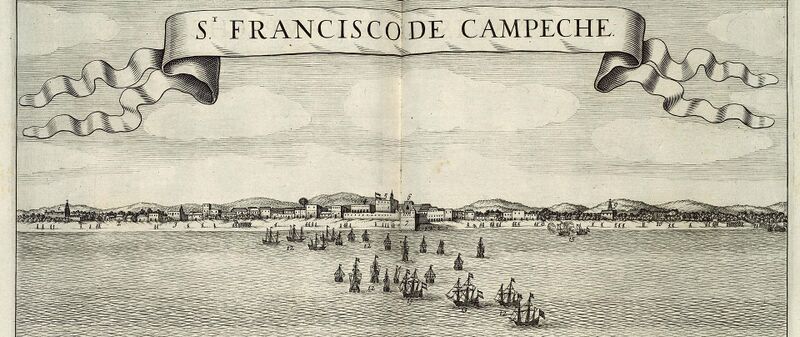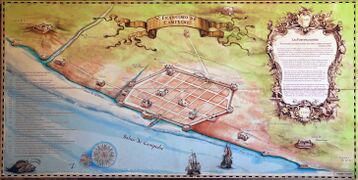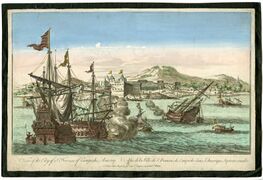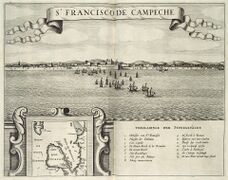Campeche
| Campeche, Yucatán | ||||||||||||
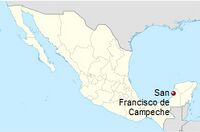
| ||||||||||||
| ||||||||||||

|
See Wikipedia
St. Francisco de Campeche is a very well established Spanish city designed with an ‘old’ look to it, suiting the aristocratic tastes of its many landowners and wealthy merchants. It is an important crossroads between the east and the lands of New Spain.
Contents
Locations
Fortifications
Due to the constant attacks of both English and Dutch buccaneers and pirates such as Francis Drake, John Hawkins, Laurens de Graaf, Cornelis Jol, Jacobo Jackson, Jean Lafitte, Francisco de Grammont, Bartolomé Portugués, William Parker, Francisco Nau, Edward Mansvelt, Henry Morgan, Lewis Scot, Roche Braziliano and Michel de Grammont for almost 160 years, in 1686 the government started to fortify the city. The French engineer Louis Bouchard de Becour was commissioned to unify all the defensive works that surrounded the city with a wall. At its completion, the wall surrounding the city of Campeche was 2,560 meters in length, forming an irregular hexagon around the main part of the city, with eight defensive bastions on the corners:
- Santiago:
- San Pedro:
- San Francisco: Protects the Land Gate.
- San Juan: Protects the Land Gate.
- Nuestra Señora de la Soledad: Also protects the Sea Gate. It is the largest one.
- San Carlos: This fort was the first one built. Protects the Sea Gate.
- Santa Rosa
It also contained four gates to allow access to the main quarters. The main entrances are what would become the Puerta de la tierra ("Land Gate"; built in 1732), and the Puerta del mar ("Sea Gate"). The other gates were Guadalupe and San Román, connecting to the outside neighborhoods. Additionally, one main fort (and eventually, a second) protected the city from a nearby hill, the fort of San Miguel (San José el Alto would be built in 1762). The fort gave long-range artillery coverage and served also as a look-out. They were built before the walls of the city.
